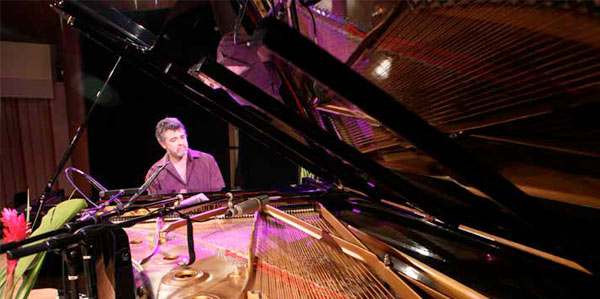Move Back! You’re Too Close
Is there only one way to make a great recording? I certainly don’t think so. So I have a bit of a problem when another engineer says flat out that a certain type of music is “best served” by a certain recording technique. It’s like the statements about multichannel in Robert Harley’s book that basically say, “my way or the highway”. I’m pretty ardent in my recording preferences but I do acknowledge that I’ve heard the work of a lot of other engineers and enjoyed their sound. There are lots of different ways to record music…any type of music. So when I happened on the following paragraph from an experienced audio engineer, I had to offer a contrary viewpoint. Here’s what I read on a web page that describes the recording philosophy of his small audiophile company.
“The music we are recording (primarily classical, jazz, and light classical) is served best by our recording techniques. By using only two microphones we avoid the myriad problems, which occur with multi-track recording. Some of these problems are basic, such as microphones placed closer to an instrument than normal listening would dictate. An example you may have seen on some pictures of recording sessions is microphones placed under the lid of a piano! Have you ever tried to listen to a piano that way? The sound is not good–the piano was made to be listened to at a distance. When you listen to a group of instruments, whether an orchestra or even just two instruments performing together, you need to be back far enough to hear the ‘ensemble’ created by the sounds of the instruments blending. Yet as part of that ensemble the instruments still retain their individual character while contributing to the whole sound. Multi-miking destroys that ensemble which occurs in a performance, since instruments (or sections of instruments) are separated. The ‘blending’, if you can call it that, only occurs in the electronic mixing.”
Wow, I guess I’ve been destroying the music in my recordings for most of my professional life. Let me address the individual points made in the statement one at a time.
First, I can assure that classical, jazz and light classical music is NOT best served by using only two microphones. It’s certainly a very common type of recording that goes all the way back to the early experiments of Alan Blumlein, the inventor of stereo recording. It guarantees that the instrumental blend established by the conductor is maintained throughout the recording process. After all, with only two tracks there’s nothing to mix after the session. What you have is what you have…like it or not.
There are lots of wonderful recordings made this way. Todd Garfinkle of MA Records and Morten Lynberg of 2L in Norway work this way (although Morten does it with a 5.1 array of mikes). But my preference is for music that sounds closer and more direct. I base some of my own recording techniques on the releases from Windham Hill. They used very close microphones.
Is it more difficult to record an ensemble using multiple microphones feeding multiple tracks on a MCH recorder? Sure it is…but it’s certainly not impossible. The “myriad of problems” alluded to above are not insurmountable. And the specific example of how one listens to a piano is completely off base.
He says, “An example you may have seen on some pictures of recording sessions is microphones placed under the lid of a piano! Have you ever tried to listen to a piano that way?” Well, yes I have put my head over the strings to get a sense of the instrument. I’ve actually laid on the floor underneath a 9-foot grand piano during a 4 hour concert…it’s was a transformative experience.
I’m one of those engineers that puts multiple microphones just over the strings in a piano. I do this not because I want you experience the piano playing from that location but because I can capture the direct sound produced by the hammers, strings and amplified by the soundboard. I know that you don’t listen to your stereo speakers with your head inches away from the drivers either. But what if I reproduce the direct sound of a Steinway piano in your front left and right speakers as if they were the soundboard in the instrument? Wouldn’t your listening position 10-15 back from the speakers mean the sound of piano would seem like it’s right there in the room 10 feet in front of you? Of course! And that’s why Bryan Pezzone and Christian Jacob and lots of other pianists rave about the sound of our piano recordings. The reviews that I’ve received from audiophile publications are over the top about our piano sound. In fact, Dolby licensed one of our solo piano tracks and included it on the latest demonstration disc! This guy may enjoy the sound of a piano from 30 feet away (the combined mic to piano distance AND the speaker to listener distance) but not everyone does. Take a listen to the piano in the free HD-Audio samples that are available on this site and let me know what you think.
The point is there is no single best method to record any type of music. There are lots of established models but perhaps it’s time to revisit them and try some new approaches. I think it’s time.
I know the pianists that have heard the recordings that I’ve made love the sound and that’s good enough for me.


Pingback: Novice Professionals | Real HD-Audio